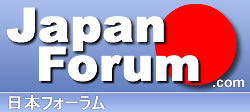
 |
How does use これ、それ、あれ、どれandこの、その、あの、どの
I am beginning student of Janpanese. I don't know different これ、それ、あれ、どれandこの、その、あの. they are all meaning "this, that". please explain them thank you!
|
Quote:
sore = that are = that over there dore = which kono = this one sono = that one ano = that one over there dono = which one |
Quote:
|
Quote:
does a verb always follow a pronoun in english? >.>'''' |
Quote:
ありがどうございます。 |
Quote:
この only means "this" and never mean "this one" and a noun MUST follow it. "This one" is already a noun phrase, isn't it? |
Quote:
|
Quote:
Example: このペンです。It is this pen. これです。It is this. |
Quote:
|
Quote:
|
It's all related to where the physical object is located, in relation to the speaker and the listener. This may sound complicated, and at first very unlogical, but when you get the hang of it it's actually very convenient.
Imagine you going into a store and the cleark at the counter ask you what you'd like to buy. You point at the object right infront of you saying "これ" or you might point at an object near the cleark and say "それ" or at something far away from the both of you, then you'd have to use "あれ". It's the same story with この、その、あの. As easy as that |
You never put a noun in front of the -re form of the word. It is used when saying things like "This is ____". When using the -no form, you put a word in front of it, such as another poster said, "pen"... so it's like saying "This pen is ______".
|
Quote:
|
Quote:
haha xD my apologies i totally replied to this while i was basically half asleep (it was..... like 5am my time >.>") and..... i can't write in hiragana... since i have no japanese input =.= so yeaaa... bear w/ me? xD |
Quote:
|
| All times are GMT. The time now is 12:36 AM. |